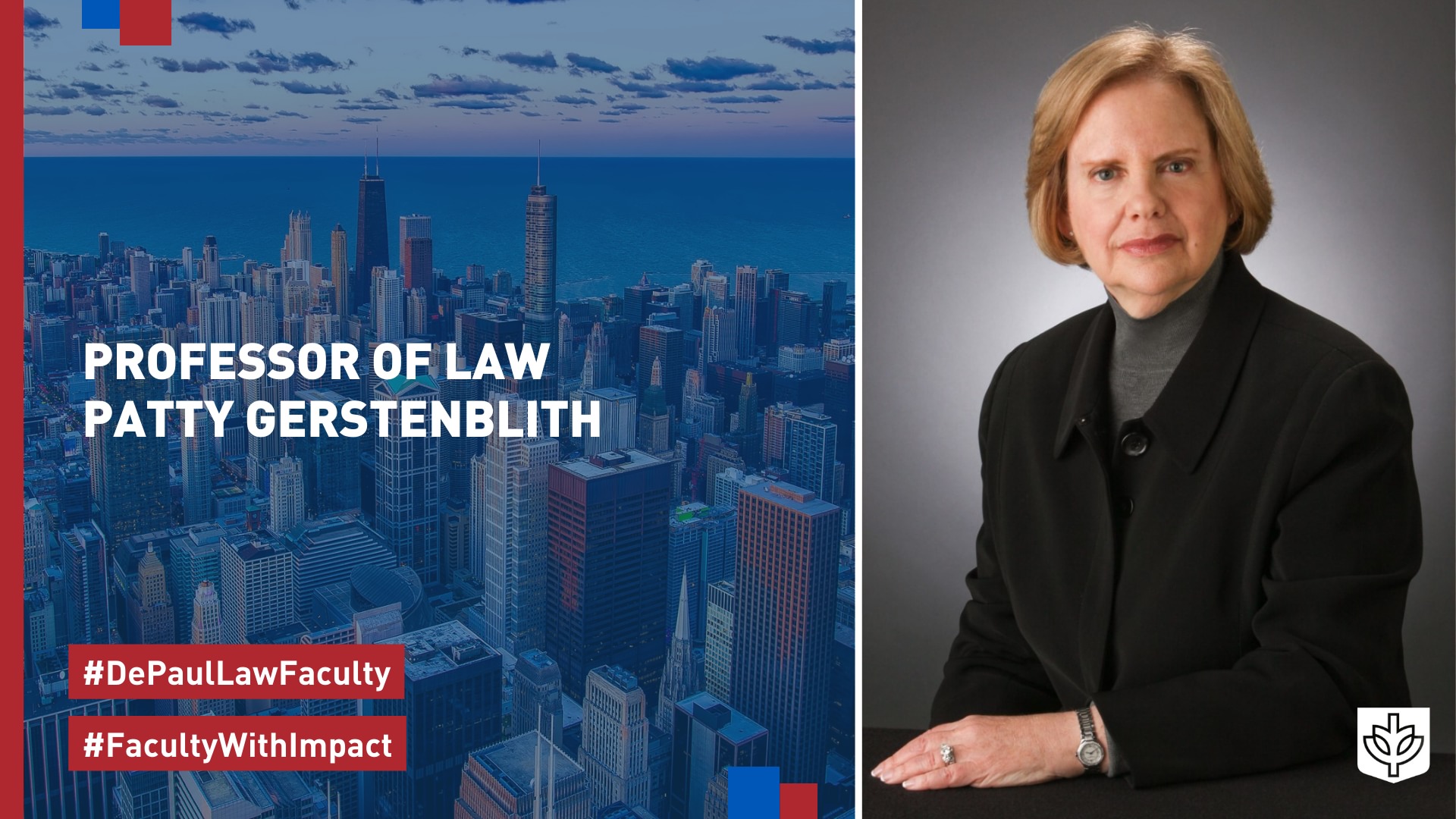 Above and Beyond
Above and Beyond
In a recent profile for DePaul’s online magazine, Distinctions, Professor Patty Gerstenblith talks about art and cultural heritage law and why DePaul’s program is a leader in the field.
The discipline of art and cultural heritage law itself is a
relatively new field. I have been teaching at DePaul for 30 years and
have benefitted from being in the right place, at the right time: The
field and I grew up together.
Perhaps the aspect I like most about the field is its
interdisciplinary nature: Teaching it requires some knowledge of art
history, archaeology, anthropology, history, international relations and
other academic fields. One thing we do well at DePaul College of Law is
to look at the big picture. Here, art and cultural heritage law is
affiliated with two other areas: intellectual property and international
law. Both of these programs at DePaul are nationally recognized. As a
result, our students graduate with a broad set of practical skills.
"When I say DePaul is 'the right place' for exploring cultural
heritage, I mean that literally. Here, we appreciate and respect
different cultures set against a global environment."
I have been fortunate to serve twice on the President’s Cultural
Property Advisory Committee in the Department of State, currently as the
committee’s chair. The committee makes recommendations to the Assistant
Secretary of State for Educational and Cultural Affairs as to whether
the United States should enter into bilateral agreements with other
nations to restrict the import into the U.S. of undocumented
archaeological and ethnological materials.
The legislation under which the committee operates is part of the
United States’ adherence to the 1970 UNESCO Convention on the Means of
Prohibiting and Preventing the Illicit Import, Export and Transfer of
Ownership of Cultural Property. When this legislation was adopted in
1983, the United States was, and probably still is, the single largest
end-destination country for looted antiquities and stolen artifacts. The
work of the committee is, therefore, important in establishing good
relations with other countries and in helping to preserve the world’s
cultural heritage.
When I say DePaul is “the right place” for exploring cultural
heritage, I mean that literally. Here, we appreciate and respect
different cultures set against a global environment. I think this is
what our mission is all about, and that is what this specialty is all
about, too.
DePaul’s commitment to art and cultural heritage law is apparent in
many ways. For one thing, I am one of the few professors in the country
with this specialty who is a full-time faculty member. Also, we are
continually enhancing our program. For example, we are introducing two
new courses next year—one on customs law, which will address the legal
interactions surrounding international trade, and one on art market
transactions, which will deal with the commercial law surrounding the
business of buying and selling art. Again, our students will gain skills
that can be applied in several contexts.
"Our students get a richer, fuller educational experience in this field than they would at any other law school."
Our conferences attract scholars and practitioners from all over the
country—faculty and students from other law schools, lawyers who work
for museums, government agencies and auction houses, art dealers and
collectors. Our National Cultural Heritage Law Moot Court Competition is
the only one of its kind. This year, the competition hosted 19 teams
from around the country and featured more than 75 volunteer attorney
judges, including many nationally renowned cultural property experts.
These events build our prestige, while providing great networking and
educational opportunities for our students.
We educate our students in other ways as well. Our Center for Art, Museum & Cultural Heritage Law
offers them opportunities for extern/intern placements at The Field
Museum, Chicago History Museum, and other nonprofit and government
agencies. Students have been publishing our Journal of Art, Technology and Intellectual Property Law for more than 20 years, and they contribute research to my work and to our events.
For reasons like these, I think—in fact, there’s no doubt in my
mind—that DePaul’s program is the best in the country. Our students get a
richer, fuller educational experience in this field than they would at
any other law school. I am really proud of that.
Patty Gerstenblith is
a distinguished research professor of law and director of the Center
for Art, Museum & Cultural Heritage Law. She is founding president
of the Lawyers’ Committee for Cultural Heritage Preservation
(2005-2011), a director of the U.S. Committee of the Blue Shield (a
nonprofit organization committed to the protection of cultural property
worldwide during armed conflict) and immediate past co-chair of the
American Bar Association’s Art and Cultural Heritage Law Committee. In
2011, she was appointed by President Barack Obama to chair the
President’s Cultural Property Advisory Committee in the Department of
State; during the Clinton administration, she served as a public
representative.